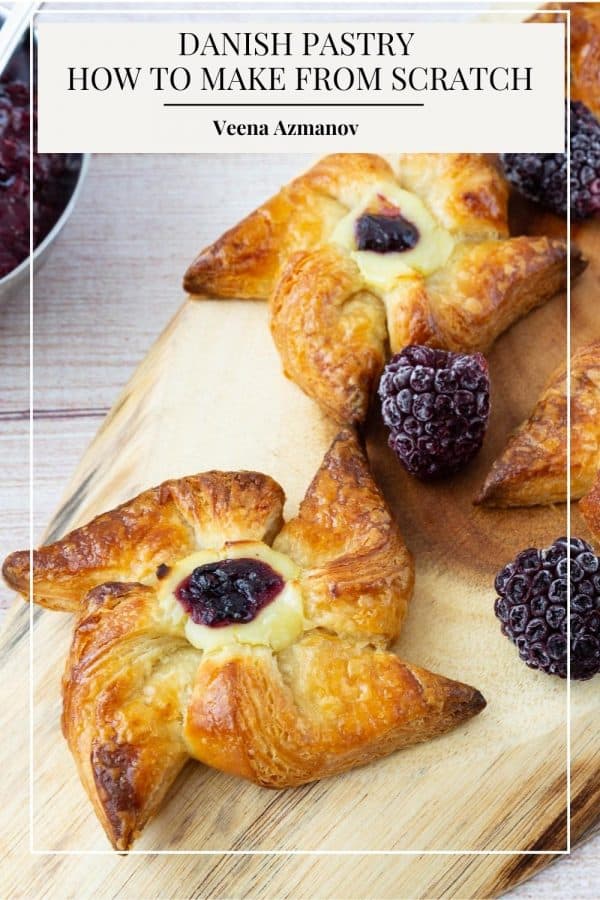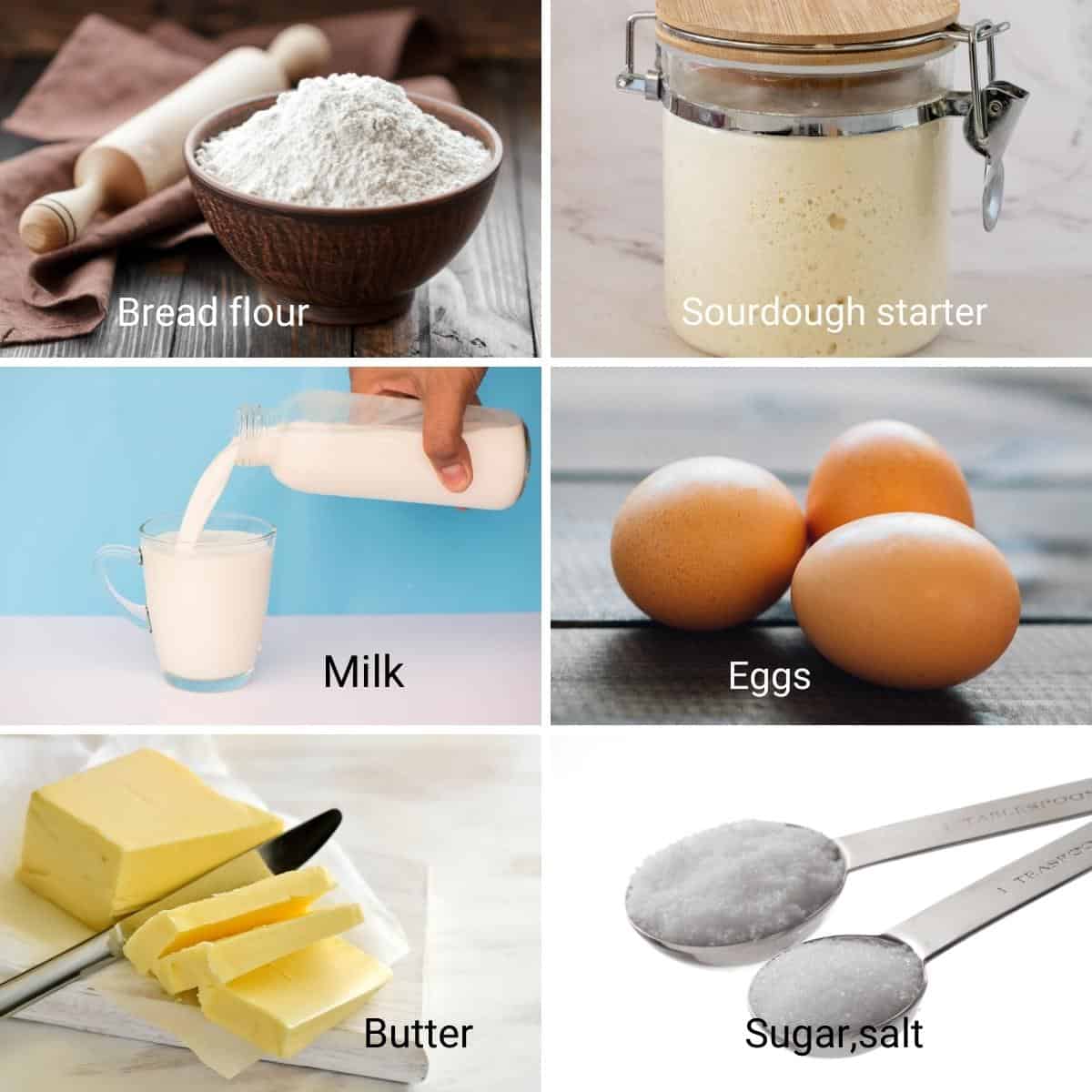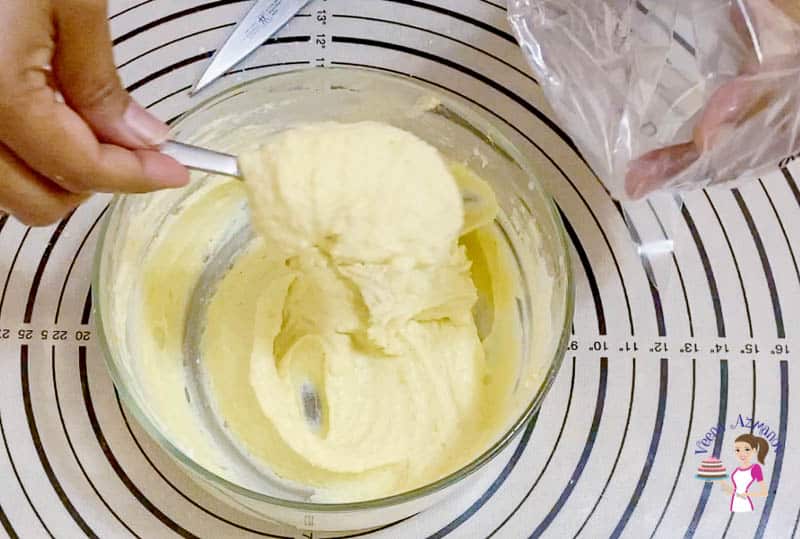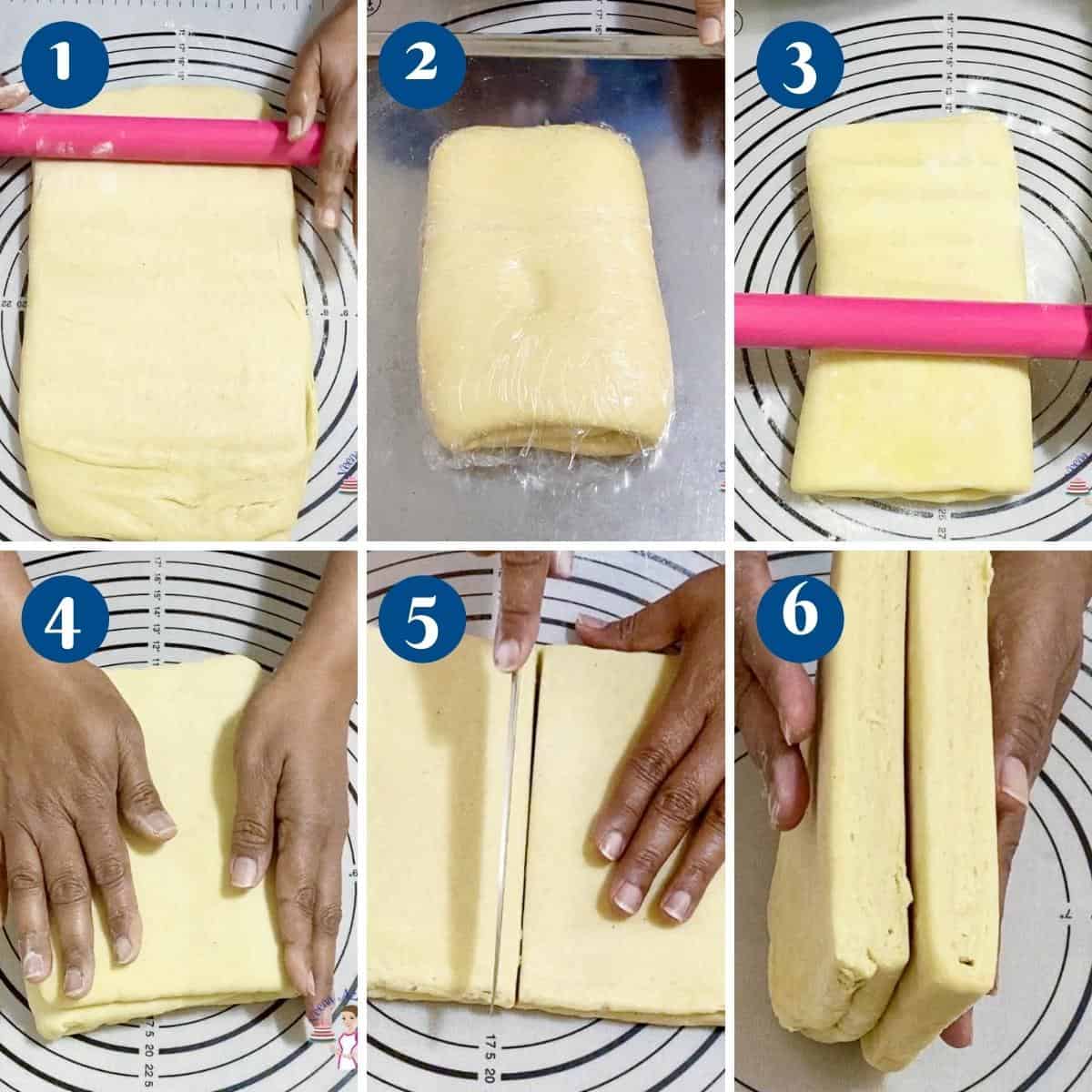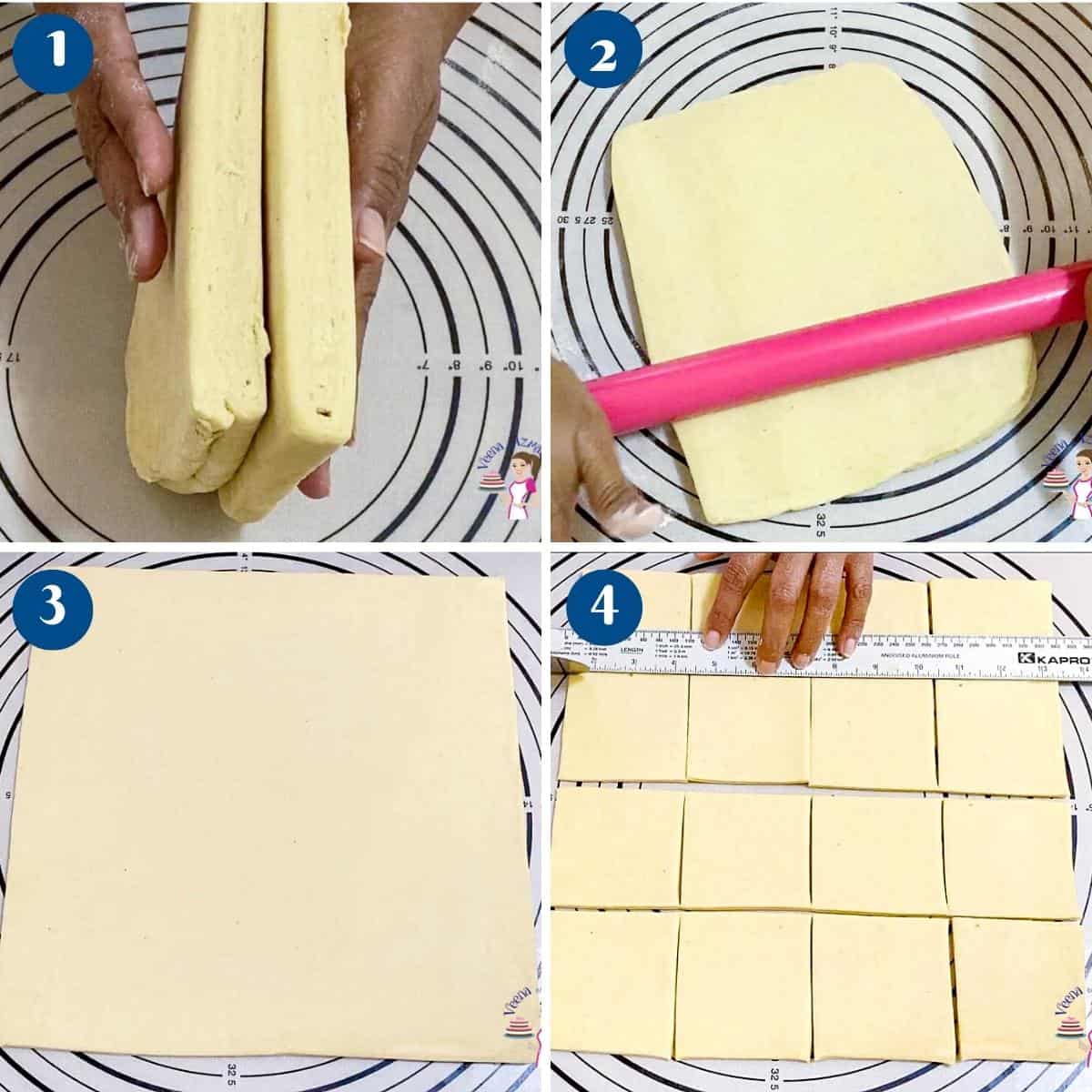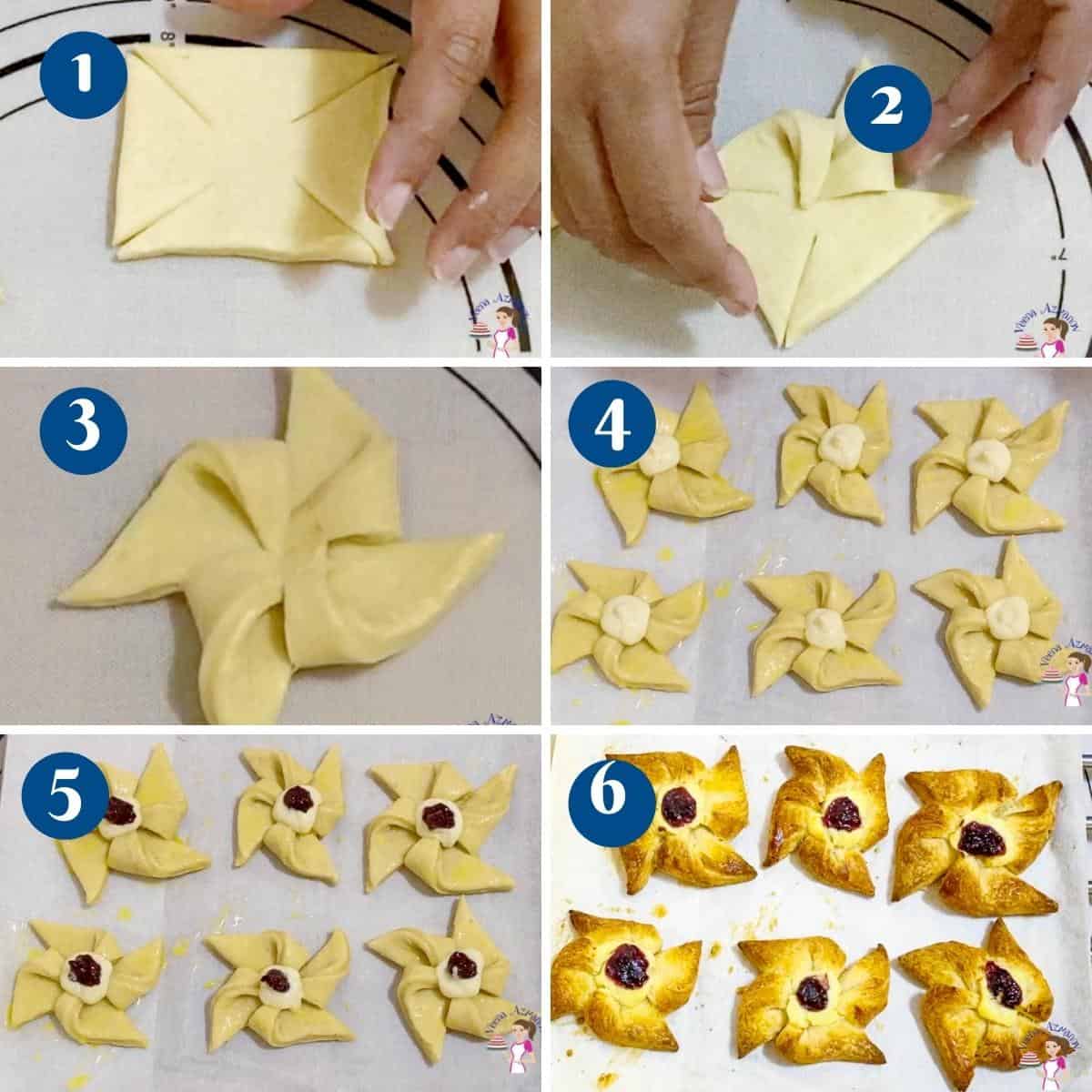We spoke all about Danish pastry previously and I shared some wonderful Danish creations with you already. These pinwheels are probably the easiest of all pastries. Of course, the most important thing about any danish is the dough. That is why every Danish recipe I share with you is detailed with a video and progress pictures. Those layers of butter multiplied between rolling and chilling several times.
Why make this Danish pastry
As I said above, we are using the Danish pastry dough as our base with cream cheese and jam as our choice for filling, as we did in our strawberry braid. And yet, you can certainly use pastry cream as we did in our raisin Danish pastry spirals or almond cream, and as we did in our blackberry braid. It’s a very forgiving dough that’s easy to knead with a stand mixer or by hand. There are four main components to this danish pastry pinwheels :The dough – this is simple yeast-based dough with eggs, butter, and sugar. It can be soft and sticky to work with, so don’t skip the chilling times.Butter block – yes, it is lots of butter, which we cream with a little flour and then laminate between the dough. The purpose of the flour in the butter is to help stabilize it. Most professionals often skip the flour, but I recommend you use it.Cream cheese – made with cream cheese, egg yolk, sugar, and vanilla. Jam – you can use whatever jam you want. Today, I used my berry jam.
Danish pastry pinwheels
Apricot glaze
Heat the apricot jam and water on low heat until dissolved. Strain through a sieve – set aside until ready to use.Pro tip – If necessary, warm in the microwave for 10 seconds before using it.
Cream cheese spread
Combine all ingredients in a bowl. Keep in the fridge until ready to use.
Danish dough
Dry ingredients – In the bowl of a stand mixer with the hook attachment combine flour and salt. Set aside. You can also use a food processor to make this dough.Pro tip – Salt slows fermentation so we add it to the flour rather than directly into the wet mixture.Yeast mixture – In a measuring cup or bowl, combine milk, sugar, yeast, egg, and vanilla extract.Pro tip – you don’t need to activate the instant variety but, I like to ensure my yeast is good. So, I leave the mixture aside for 3 to 5 minutes, if it foams it’s good to go.Wet to dry – Then, add the yeast mixture to the flour mixture. Combine on medium-high until all flour is incorporated. Knead a minute more.Pro tip – the dough will be soft and sticky but do not add any more flour just yet.Knead – Then, gradually add the room temperature butter, one tablespoon at a time. Then, knead for 3 minutes on medium Alternatively, you can knead by hand for 5 to 7 minutes.Rest – The dough will be soft and slightly sticky. Remove from the mixer, and shape into a ball. Place in an oiled bowl, cover with plastic wrap and chill for 15 minutes.Pro tip – Unless the dough is too soft and sticky you do not need to add any more flour. Also, if necessary add a few tablespoons only.
Butter blocks
Template – Use a parchment paper to create a template 12 x 6-inches (see video) – set aside.Cream – In the same bowl of the electric mixer bowl (no need to wash), cream the butter and flour just until combined. Transfer to the prepared parchment paper template. Spread evenly with a spatula. Use a rolling pin to guide it inside of the template towards the corners (see video).Divide – Use a ruler to mark them at 6 inches. So, now this will give you two 6 x 6-inch blocks (see video).Pro tip – we need 2 sheets of butter 6 x 6 inches each. You can use a 6-inches square baking pan to make two such blocks. This 12 x 6 method ensures the blocks are even.Pro tip – be gentle with the rolling pin using a spreading motion so the butter doesn’t come out of the corners.Chill in the fridge for 15 minutes.Pro tip – We want the fat to be cold but still be flexible so that when we roll it will spread between the folds. If you chill too long it will break rather than spread.
Laminate the dough
Roll – Transfer the dough to a lightly floured surface. Roll to a long rectangle of 7 x 18-inches.Fold – Open the butter block and divide it into 2 at the mark you created. Now you should have two – 6 x 6-inch blocks. Place one block over the center. Fold one side over. Then, place the second block on top and fold the other side over.Pro tip – Now you should have layers of dough, butter, dough, butter, dough – makes sense?Chill – Wrap the dough, place it on a baking sheet, and into the refrigerator – chill for 15 minutes.Pro tip – if the dough and butter are still cold when you wrap you can continue with the first fold. Also, in warm places, you may need more cooling time.
Folds / turns
Turn the dough – Roll the chilled pastry dough into a rectangle – with the short side facing you. Roll to a rectangle approximately 6 x 12-inches.First fold – Fold the dough lengthways into thirds like a business letter (see video). Wrap in plastic on a baking sheet and place into the fridge to chill for 30 minutes.Second fold – Roll the dough lengthways again with the short side facing you – (see video) to about 6 x 12-inch long again. Fold the dough into thirds again like a business letter (see video). Place in the fridge for 30 minutes if necessary.Third fold – Roll the dough lengthways again with the short side facing you – (see video) to about 6 x 12-inch long again. Fold the dough into thirds again like a business letter (see video).Chill – After the third fold, chill in the fridge for at least two hours or until well chilled. This can be chilled for up to 48 hours.Pro tip– it is very important that the dough be well cold before using; otherwise, the folds will blend ruining all your effort.Divide – Roll the dough into a 6 x 12-inches rectangle. Divide into 2. Place one in the fridge while you work on the second one.Pro tip – you want to work in batches so the dough stays cold at all times. Also, it means you won’t roll too thick.
Shape the pinwheels
Roll – Roll the dough to about 12 x 12-inch square. Trim edges so you have straight sharp edges.Pro tip – I roll to about 13 x 13 so I can trim the edges on all sides and get a 12 x 12-inches square. Trimming will open the layers and give a better rise.Squares – You can use the sheet as a whole or cut it into 3 x 3-inch squares, (about 16). Mark at 3-inch from either side as shown in the video.Pro tip – Place the squares in the fridge to keep cold. Work with a few at a time especially if you like in hot and humid conditions.Shape – Cut the corners of the square three-quarters of the way towards the center. Fold every other point towards the center. Press to seal in the center.Pro tip – it sounds complicated but it’s not. See the progress pictures or the video to see how this is done.Proof – Place on a baking tray and cover the pinwheels with a clean kitchen cloth – let poof for 45 minutes.
Fill and Bake
Oven – Preheat the oven at 375°F/ 190°C / Gas Mark 5. Brush the pastry with a beaten egg.Fill – Pipe a generous dollop of the cream cheese filling in the center, topped with a generous squeeze of jam. (see video).Bake – Bake in the hot oven for 15 to 20 minutes until rich golden brown.Pro tip – if the pastries become too dark while baking, tent them with an aluminum foil.Glaze- Remove from the oven and let cool on the tray for 10 minutes. Then, using a pastry brush glaze them with the prepared apricot glaze.Pro tip – if you brush while the pastry is very hot it will absorb all the glaze and become too sweet and you won’t have that shiny appearance.Cool – Transfer to a cooling rack and cool them completely before storing. These pastries are best enjoyed on the day they are baked. But, they also freeze well for months.
Frequently asked questions
Thank you for sharing - Save for later
Make and chill the dough – 10 + 15 minsMake and chill the butter block – 10 + 15 minutes Laminate the dough – 10 minutes First fold, then chill the dough – 10 + 20 minutes Second fold, then chill the dough – 10 + 20 minutesThird fold, then chill the dough – 10 + 2 hours (up to 48 hours)Prepare cream cheese – 10 minutes Prepare apricot glaze – 5 minutesShape the danish – 20 minutes Proof the danish – 45 minutesBake – 15 to 20 minutes Active time – 1 hr 40 mins, Inactive time – 4hrs 30 mins

